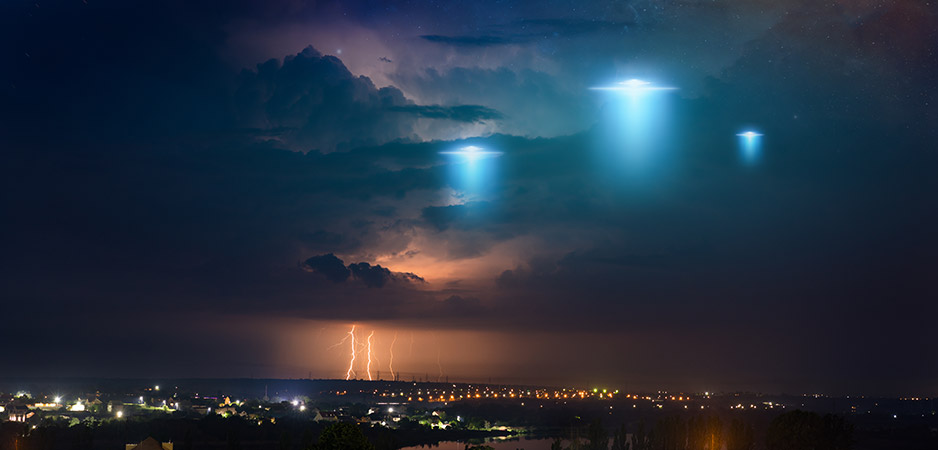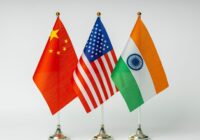In recent months, the build-up has been accelerating. In recent weeks, the media would hardly let a day go by without whetting the appetites of those who expected everyone’s favorite truthteller, the Office of the Director of National Intelligence, to reveal the long-awaited truth. Analyzing the trove of US Defense Department resources, the intelligence community was ready to reveal the hitherto carefully hidden proof of alien activity.
The fact that the source of the new revelation was the CIA, rather than the Pentagon itself, meant that whatever alternative truth one happened to believe in before reading the report, even if contradicted by the report, would remain valid for the believer. As in the case of Russiagate, if you agree with the intelligence community’s assessment, it must be the truth. If you disagree, it is proof of a coverup.
The Reassuring Presence of Multiple Threats
The New York Times headline on the report released on June 25 read: “U.S. Has No Explanation for Unidentified Objects and Stops Short of Ruling Out Aliens.” But this wasn’t even news. On June 3, The Times published an article with the title: “U.S. Finds No Evidence of Alien Technology in Flying Objects, but Can’t Rule It Out, Either.” Why people imagined that the intelligence community might have changed its mind over a three-week period is itself a cosmic mystery.
Friday’s article reassuringly calls it a preliminary report, meaning the truth may yet come out at a later stage. It implicitly recognizes the potential for further inconclusive news based on speculation to appear over the next three weeks, three months, years and decades: “A new government report is likely to fuel theories about unexplained aerial phenomena.”
Today’s Daily Devil’s Dictionary definition:
Unexplained:
An adjective that applies to all phenomena that have not been thoroughly dissected by scientific methods, leaving them open to any kind of creative speculative reasoning or fantasy that will inevitably be packaged and breathlessly promoted by enterprising people for money or fame
Contextual Note
In short, the report frustrated everyone on one level and comforted them infinitely on another. The world learned on Friday that nothing has been decided. No explanation carries the day. We are all free to promote our preferred explanation and believe it’s the only one that makes sense. Americans are jealous of their “freedoms” (always plural). After freedom of speech (the right to be politically incorrect) and the freedom to own assault weapons (whistleblowing is a crime but hoarding weapons to overthrow the government is a right), the pillars of US democracy, the freedom of religion stands as equally fundamental.
This essentially means two things. The first is that every man, woman and child may choose to attend the services of any denomination they prefer on Sunday morning. The second means that as individuals, they are free to speculate about things that fly through the air, especially when such objects refuse to obey known physical laws. In other words, in publishing its report, the government has played its expected role of not interfering with anyone’s private beliefs or constitutional rights.
The report offers one other substantial advantage. Those who are sure of their own theory will also have the private satisfaction of cursing the government for refusing to reveal what they know to be true. The intelligence services have realized that the paranoia that drives conspiracy theories, even when it is directed against the security state, plays a significant role in buttressing the status quo. This could be called the strategy of affirmative uncertainty. By exploiting it, the government’s report creates a wild marketplace of competing beliefs whose very diversity serves the establishment’s purposes by allowing the market forces to cancel one another out. The government plays the role of prime mover of a global civilizational psychodrama. But by failing to endorse one thesis, the state retains the status of the neutral bystander who simply observes the action playing out around it.
One of the most popular intellectual activities of Americans consists of having a theory and spending one’s time identifying the reasons why that theory has been suppressed by others. The usual suspects are the US government, the media, foreign thinkers, the nation’s youth, universities, other governments, bankers and other members of the oligarchy, the mafia, Muslims, atheists or Catholics, and those neighbors down the street who act suspiciously and don’t even own a dog.
Victimization has become a prominent feature of US culture. This may be the natural consequence of a nation whose Constitution features a Bill of Rights taken by many to be divinely decreed. It includes the idea that my beliefs are being attacked and treated as untrue. This has even led to the odd innovation of “trigger warnings.”
This sense of victimized thought leads to an impressive amount of creative thinking about who is responsible for the repression. The usual suspects are monetary reward (for instance, budget allocations or grants), oligarchic pressure (the public must be prevented from knowing what the elite knows), blackmail (by those who have a stake in the secret operations), or simply the most justified reason for anything a government does in the modern world: national security. This state of affairs is a godsend for the media, even the most serious media. What this means is that the debate is only now opening up about why everyone’s favorite belief about the reality of UFOs is being suppressed.
Historical Note
Though the media focus on it, the nature of UFOs represents the least interesting aspect of the current episode of this ongoing public drama. Miriam Kramer, writing for Axios, cites the psychiatrist Ziv Cohen, who notes that the report is “telling people that there is something that is potentially threatening. They’re also telling people that they were lied to for 80 years.” In other words, the decades-long UFO story that began officially in 1947 with the Roswell episode can be seen as a study of the conflictual relationship between government discourse in the US and the public’s perception.
This can be broken down into two complementary topics. The first is the nature of the narrative that surrounds militarized technology in the post-World War II order that became the basis for the expanding reality of the military-industrial complex. The second is the deep-seated suspicion of the government itself. This suspicion varies along partisan lines and, over time, according to which party is in power, but it has created a reflex of mistrust of both the government and the media that relay its messages. This has little to do with analytical criticism. It is essentially emotional.
The American public in its majority invests an unquestioning trust in the nation’s military might, deemed both necessary and noble. This sits alongside the same public’s belief that government discourse is permanently skewed. On the question of UFOs, many Americans have now come to expect that, thanks to its technological prowess and noble intentions, the military understands the truth concerning UAPs. It’s the politicians who are distorting the truth and preventing it from being known.
Kramer observes that “the investigators weren’t able to find explanations for all of the reports they looked into, leaving the door open for more conspiracy theories to develop.” The media tends to treat this as a regrettable unintended consequence of the ambiguity that undermines public trust. But public mistrust has become a driving feature of the consumer society. It is important for consumers to feel cheated, to justify their individual preferences and chosen beliefs. The strategy of affirmative uncertainty seeks to keep the feeling of being cheated alive, galvanizing the news cycle and creating the illusion that some inspired people know the truth but many more are busy obscuring it.
It is worth remembering that UAP sightings began long before 1947. Observers of UAPs three or four centuries ago talked about angels, devils and spirits rather than Russians, Chinese and extraterrestrials. In today’s world of quantum uncertainty and dark energy and dark matter, it might be more appropriate to imagine UAPS are the effects of a physical or metaphysical order we have no means of perceiving or understanding. Every civilization fabricates its own truth. Ours narcissistically focuses on beings that function in the same dysfunctional way we do.
*[In the age of Oscar Wilde and Mark Twain, another American wit, the journalist Ambrose Bierce, produced a series of satirical definitions of commonly used terms, throwing light on their hidden meanings in real discourse. Bierce eventually collected and published them as a book, The Devil’s Dictionary, in 1911. We have shamelessly appropriated his title in the interest of continuing his wholesome pedagogical effort to enlighten generations of readers of the news. Read more of The Daily Devil’s Dictionary on Fair Observer.]
The views expressed in this article are the author’s own and do not necessarily reflect Fair Observer’s editorial policy.
Support Fair Observer
We rely on your support for our independence, diversity and quality.
For more than 10 years, Fair Observer has been free, fair and independent. No billionaire owns us, no advertisers control us. We are a reader-supported nonprofit. Unlike many other publications, we keep our content free for readers regardless of where they live or whether they can afford to pay. We have no paywalls and no ads.
In the post-truth era of fake news, echo chambers and filter bubbles, we publish a plurality of perspectives from around the world. Anyone can publish with us, but everyone goes through a rigorous editorial process. So, you get fact-checked, well-reasoned content instead of noise.
We publish 2,500+ voices from 90+ countries. We also conduct education and training programs
on subjects ranging from digital media and journalism to writing and critical thinking. This
doesn’t come cheap. Servers, editors, trainers and web developers cost
money.
Please consider supporting us on a regular basis as a recurring donor or a
sustaining member.
Will you support FO’s journalism?
We rely on your support for our independence, diversity and quality.






